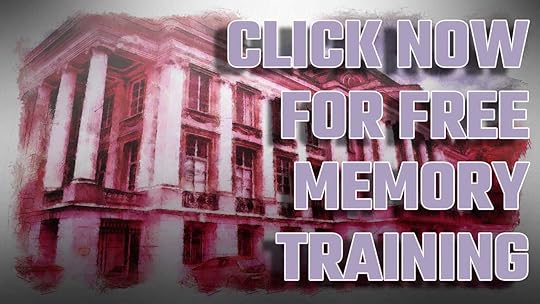Anthony Metivier's Blog, page 29
August 1, 2018
How to Improve Focus And Concentration Using 3 Memory Boosting Habits
 What if I told you I can show you how to improve focus and concentration in less than five minutes a day?
What if I told you I can show you how to improve focus and concentration in less than five minutes a day?
Would you believe me?
If you’ve just said…
I’m not sure…
In fact… I’m downright skeptical!
Good answer.
Skepticism is good.
In fact, as you’re about to learn, it’s one of the best tools for creating lasting focus and concentration.
You can use the tool of skepticism (and others I’ll share on this page) to create laser-sharp awareness that not only helps you understand information better…
It also makes you feel fantastic!
The best part?
Everything you do to improve concentration and focus also improves your memory.
And that’s exactly what the Magnetic Memory Method mission is all about:
Showing you how focus, concentration and memory are all sides of the same dice.
Are you ready?
Great! Then let’s get the focus and concentration party started with my favorite ways to improve concentration and focus.
1. Learn How To Improve Focus And Concentration By Resting More
Didn’t think I would start off with a wildcard, did you?
But it’s true.
According to Alex Soojung-Kim Pang in his book Rest: Why You Get More Done When You Work Less, many people throughout history who displayed mounds of focus and concentration…
Took a lot of rest.
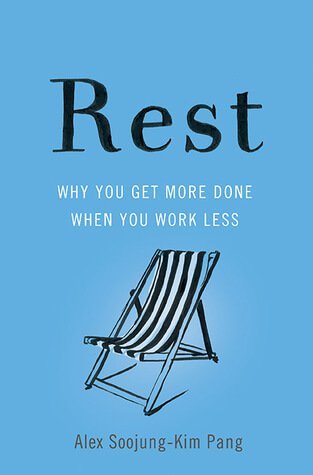
Charles Dickens, for example, wrote tons of books but spent huge chunks of his day walking.
And as Palle Yourgrau shows in A World Without Time: The Forgotten Legacy of Gödel and Einstein, part of Einstein’s success secret involved ample amounts of walking…
Just not walking alone. It’s actually hard to tell who was smarter: Einstein or Gödel.
Personally, I wouldn’t want to make any bets myself, but we know for a fact that both these men had these things in common:
1. They took lots of rest.
2. They walked a lot.
3. They were geniuses who changed the world.
The Two Secrets Of How Walking Increases Focus And Concentration…
According to Pang and the mountains of cool research he cites, walking isn’t restful because it’s not working.
Rather, walking lets the mind wander.
But wait a second!
Isn’t mind wandering the opposite of focus and concentration?
Not necessarily.
In fact, when you let your mind wander, your brain chemistry changes.
Yes, we’re talking about “drugs,” specifically dopamine.
And from a scientific perspective, it’s important to understand that most people get their best ideas when their dopamine levels are high.
These are, ironically, when we are the most distracted.
For example, you are most distracted and experiencing high levels of dopamine when you are dreaming, running, driving, walking, or, the most classic example of them all, taking a hot shower.
Why do we get more ideas when engaging in activities like these?
It’s not just the dopamine.
It’s also that we’re disengaged.
For more information about this topic, please read Rest for more on the science of mind wandering.
Oh, and believe it or not, I didn’t just read this cool book and pass it on to you without trying the suggestions out for myself.
More on my results in a future blog post. For now, it appears that Pang practices what he preaches too. Just check out his blog.
In sum:
Walking works. Especially when you combine it with Digital Fasting, my own personal cure for Digital Amnesia.

2. Remove Distractions And Read From Real Books
I don’t know about you, but I once had a love/hate relationship with Kindle.
It got so bad we ultimately broke up. I haven’t read a full book on Kindle for more than three years now.
The last time I tried, I gave up 1/4 of the way through and ordered the same book in print.
Why?
Maybe it’s because I’m getting older.
But I believe it’s partly because I never had a proper Kindle device.
I always used the Kindle app on an iPhone.
And that meant it was crushingly easy to open up a browser – or use the app itself – to fact check things.
Every disruption led to less U.S.S.R.
No, not the former Soviet Union!
I’m talking about Uninterrupted Silent Sustained Reading.
You see, physical books are like focus and concentration “engines.”
If you can just get comfortable with them and stay the course…
They pull you along page by page, increasing your commitment to paying attention…

Indeed, increasing your attention span itself (which in no way resembles the sharpness and clarity of a twitchy little goldfish).
The trick is in carving out time to read.
How to do that?
It’s easy:
Put the spotlight on all the things you do that are NOT reading.
Then ask yourself…
Do I want to improve my focus and concentration (and memory)?
Or do I prefer to sit on the couch and watch Netflix?
Or have a thousand tabs open or drown myself with music as my friend Joanna Jast talked about when she shared her tips on improving focus.
Increasing Focus And Concentration Requires This Secret Ingredient
In other words, the experts on these matters are talking about prioritizing.
Whether you prioritize with a calendar, a mind map, or even a Memory Palace to memorize your to-do list, this is how to get reading done:
1. Eliminate things that are not reading from your schedule. Things you really need not do.
2. Schedule time for reading. Even if it’s just 5 minutes a day, it’s a start that will do wonders.
(One neat book that takes just 5 minutes a day you can sink your teeth into is Stillness Speaks by Eckhart Tolle. Highly recommended, especially if you want to memorize books.)
3. Bonus: Schedule time for reading books about how to improve your focus and concentration. Or how about a set of books on how to improve focus at work?
Yeah, that sounds good. Maybe books like Rest by Alex Soojung-Kim Pang.
If you’d like other reading suggestions, check out why I make revisiting at least one book I’ve read before part of my Re-Reading Strategy.
3. Gamble Your Time With Focusing and Concentrating On Zilch
There’s a long history of scientific research showing a paradox stranger than what we just learned about mind-wandering…

It’s that meditation improves memory!
That’s right.
Sitting down and staring at the wall can and will improve your memory. Walking meditation will help too.
You don’t have to work hard at it.
You don’t have to do it for hours on end.
You just have to sit down and breathe.
And you really can start with just 5 minutes a day.
Here’s all the best research on meditation and memory I’ve got for you so far.
Now it’s time to take you deeper into my own meditation practice specifically for focus and concentration.
Again, calibrating your attention to laser-sharp levels of focus connect with memory in multiple ways.
Here’s a shocking fact:
These connections are not always simple to explain.
However, they are easy to spot once you start feeling them.
How You Will Notice This Special Technique Is Improving Your Focus And Concentration
Here are a list of some things you’ll notice when you start meditating:
1. Less mental chatter.
When the boardroom in your head settles down, your focus and concentration must improve.
Why?
Because you won’t get caught up in so much of what Gary Weber calls “blah blah blah.”
Please don’t expect it to disappear completely.
It seems possible that it can, but in my experience with what Jeffrey Martin calls Persistent Non-Symbolic Experience (PNSE)…
Complete silence in your head is not necessarily a desirable outcome.
(Kind of like how photographic memory is not really the blessing people think it is. As Jill Price’s story illustrates in that blog post, that kind of memory is much less a path to focusing help when you need to concentrate and can disrupt your life and sanity.)
2. The world seems more vivid.
Imagine if colors that used to be so boring you didn’t notice them now jump out at you.
Do you think that would sharpen your concentration?
It certainly did for me.
For example, after learning the Wim Hof Method and experiencing a breakthrough in my meditation practice, I remember heading to the gym one morning…
All of a sudden I noticed a traffic sign on a street corner in Berlin that I must have seen hundreds, if not thousands of times before.
Suddenly the sign itself and its faded green color leapt out at me.
I noticed every crack in its paint.
The rusted iron holding it in the air was suddenly so beautiful and precious.
I felt immersed in each and every detail.
And yet for some reason, although it must have been in my field of vision many times before…
Something so extraordinary had been completely invisible.
Of course, the goal when learning how to focus your mind is not to become autistic or continually overwhelmed by every little detail.
And that’s not at all what happened to me.
But this experience transfers directly to paying attention to what I’m reading in books.
I’m aware of both the characteristics of the page and the information at the same time.
And I’m aware of using memory techniques to remember dates and names and facts…
All without skipping a beat because meditation has helped me keep my brain focused on information. All while my awareness of the beauty of the material world feels blissful.
(Okay, I’m human too and sometimes slip from this bliss, but thanks to regular practice, it snaps back in place mighty fast.)
Would you like to know how to train your brain to stay focused?
In a word:
Meditate.

3. Feel Less Bothered By Worldly Events You Cannot Control
You know how it is, right?
You’re humming along. Everything’s great. Your mood couldn’t be better…
Then…
Bam!
Something happens that completely ruins everything.
All of a sudden you feel horrible, hate everything and it seems like the end of the world.
Believe me, I’ve been there.
But it happens less and less.
And the more I focus on how to increase focus and attention span (and memory) through meditation, the more I can let go.
There’s a cool quote in The Fire of Self-Knowledge by James Swartz on why this might take place:
“To clean the mind, an inquirer needs to abandon gratuitous activities, dedicate essential desire-prompted activities to the field of life and take the results as a gift.”

To be fair, Swartz says in this commentary on Shankaracharya’s Atma Bodha that meditation should not be your only strategy.
Far from it!
But when you meditate, you’ll find you can let go of one of the most gratuitous activities of all:
Grumbling at things you cannot change.
And because everything is so much more vibrant, you’ll see the results of actions you take as a gift, no matter what form the results take.
How To Bring Rest, Reading and Meditation Together
For A Focus And Concentration Triple-Whammy
Could I take another few moments of your time and share my own daily ritual?
I promise that it will help you, even if only to give you some ideas to play around with for your personal development.
Assuming you’re cool with that, here’s basically how I suggest anyone can improve their focus and concentration while developing their memory skills:
1. Remove all devices from the room where you sleep.
If you struggle at first, learn savasana. That’s a fancy yoga-word for lying still without moving.
I wrote a whole book about it called The Ultimate Sleep Remedy, but seriously, just lay without moving and train yourself to be comfortable with it.
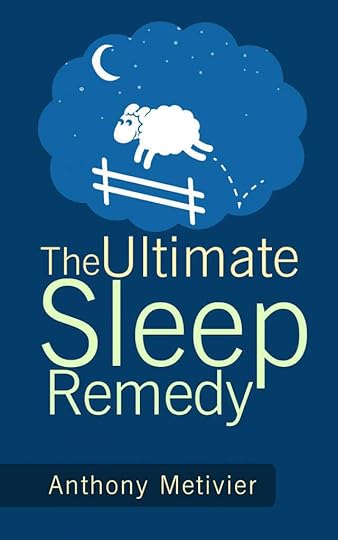
I wander my Memory Palaces as I lay there and focus on breathing and some of the other things I’m going to share with you in this list.
2. Read physical books and use memory techniques (like the Magnetic Memory Method) to remember the information.
I’ve suggested a few books already, and here’s one I’m actively memorizing from at the moment.
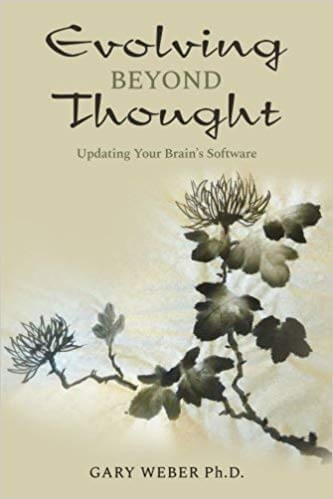
At the end of Evolving Beyond Thought, Gary Weber has included something extraordinary:
The best “self-inquiry” phrases from the Ribhu Gita.
Remember when I was talking about skepticism at the top of this page? What a powerful tool it can be for improving your focus and concentration?
Well, now you’ve hit pay dirt.
So far I’ve memorized the Sanskrit for:
How do my thoughts behave? Are they useful?
Just how unreal are my thoughts?
(I recited a bit on a recent podcast all about binaural beats and memory, which may or may not help with the focus and concentration issue.)
Why does this skepticism help improve my focus and concentration while enhancing my memory?
The answer is simple:
When I catch the boardroom in my mind running along, I remember to ask in BOTH Sanskrit and English these skeptical questions.
I’m exercising my memory while correcting course back to focus and concentration!
Because the answer is usually, “No! These thoughts are impeding my concentration!”
And when I realize that, thanks to meditation, I can let them go.
Even better:
Sometimes, thanks to persistent skepticism, I get the opposite the answer to the question. Sometimes I get to say, “Yes! These thoughts are useful!”
In fact, sometimes my thoughts are especially beneficial, such as when I’m thinking about how to teach you memory skills and better mental habits.
And how “unreal” are they?
Well, they are never unreal when people like Robert Martínez emails to say:
Dear Anthony,
Just to let you know that I’m really happy as I used my first Memory Palace to memorise 41 criteria for a teacher assessment scheme I work with and it took me only 1.5 hours to encode.
I then asked one of my colleagues to test me by asking me random criteria e.g. what’s 5d, 4m, etc. and it was exciting!
I was able to decode all the information and my colleague was really impressed. I told her about the MMM too. Anyways, I just wanted to share my excitement with you!
Bye for now,
Robert
Of course, I don’t let it get to my ego (much).
I just teach more.
And learn more, so I have more to teach.
Just like I recommend you do.
Because here’s the thing:
At the end of the day, you are in control of how you improve your focus and concentration.
There are lots of ways to get there, but all of them involve changing your perception of the world.
And resting, reading and meditation are the finest ways I know of making that happen while improving your memory.
The Truth About Perception According To Oliver Sacks
And you don’t have to take my word for it. Just listen to Oliver Sacks laying down the truth:
“Every act of perception is to some degree an act of creation, and every act of memory is to some degree an act of imagination.”

When you follow the three suggestions in this post, you’ll find that you use perception to create better habits.
And that leads to better thoughts.
Thoughts that shape better behaviors.
Rest or do whatever healthy things switch your dopamine on to improve your focus and concentration.
Read real books and memorize the materials.
Then meditate. Wander a Memory Palace while you’re at it.
I have more steps you can follow related to the journaling elements and language learning if you want to really go for gold.
Do these things and the improvement of your focus and concentration will happen practically on autopilot.
The post How to Improve Focus And Concentration Using 3 Memory Boosting Habits appeared first on Magnetic Memory Method - How to Memorize With A Memory Palace.
July 18, 2018
Memorization Technique Secrets: 5 Rarely Known Benefits Of Mnemonics
 Are you looking for the perfect memorization technique?
Are you looking for the perfect memorization technique?
And getting frustrated?
Well, don’t blame yourself. Because it is frustrating, isn’t it?
I mean… everywhere you go people are using different terminology.
Linking…
P.A.O. …
Mind Palace…
Roman Room…
Journey Method…
Mnemonic Peg System…
How Real Are The Promises Of Memorization Techniques
For Students And Mature Learners?
I mean, lets face it:
All those terms sometimes make the whole memory improvement world feel a bit like a hoax.
After all, even if science backs up memory improvement techniques 100%…
Why the heck can’t people get their terms straight!?!
Well, let’s get the painful truth about the world of memorization techniques out of the way:
Whether you want to know how to memorize a speech fast or are desperate for memorization techniques for studying…
You’re going to come across a lot of different terms.
That’s just the way the world of memory improvement. It has been since humans started developing memorization techniques to help them survive.
And it’s getting more complex!
But in reality, a lot of those techniques are essentially the same.
Each and every one has a location-based element in one way or another.
That means that all memorization techniques are spatial.
And as Thales, the first person in the West to be considered a philosopher and scientist in the same body, said:
Megiston topos hapanta gar chorei
(Space is ultimate for it contains all things)
That’s the very cool thing about the discoveries here at the Magnetic Memory Method Podcast.
Once you understand this and practice with memorization techniques from this basis, your results will accelerate.
And the complexity eases down, even if there will still be ins and outs to consider.
And if you’re interested in more about the history of where mnemonics come from to help humans deal with complexity and how they used space to do it, please check out Lynne Kelly’s The Memory Code.

Just as we do here on this blog nearly every week, Lynne’s book will show you exactly how learning these techniques will help you deal with extreme complexity in modern life.
My course which you can subscribe to at the bottom of this post will take you through everything too. It’s free.
For now, let’s persist and do our best to get past all the confusing terminology.
Let’s talk instead about the…
5 Little-Known Benefits Of Using The Best
Memorization Technique Of Them All
Ultimately, what will help most people is the Magnetic Memory Palace.
At the end of this post, you’ll get an opportunity to learn how to create one of these for free, along with the best terminology we’ve got.
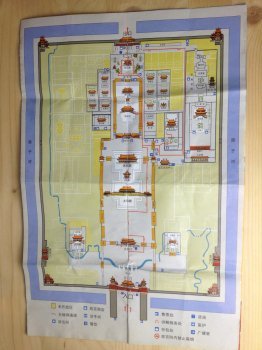
No more “method of loci” or other confusing terms. Again, the truth is that the linking method and the peg method and the Roman Room, the Major System and all the rest…
You can use them all at the same time in a Magnetic Memory Palace.
And if you know the benefits of learning to do so…
Any overwhelm you face will be easy to handle.
Plus, you can experience these 5 benefits, starting with…
1. Use Fast Memorization Techniques To Make Learning Fun!
I get email every day from people who find learning a real challenge.
Some of them are struggling to learn and remember very boring topics.
That’s a real problem too because when you’re bored…
Your progress slows to a crawl.
Yet, when you have the right memorization technique for the job, things not only get faster…
The memorization techniques for studying you use make everything more interesting.
And more fun.
The Best Memorization Techniques Rapidly Increase Focus And Concentration

Especially when you know how to to improve focus and concentration with a memorization technique like the Magnetic Memory Palace.
Of course, it helps too if you know about motivation in learn, such as intrinsic and extrinsic motivation.
Basically, you just have to make sure that you’re always dangling a carrot in front of you instead of threatening yourself with a stick.
Don’t believe me? Self punishment is a real issue when it comes to memory. Please avoid it at all costs.
2. Memorization Techniques For Exams Reduce Stress
Imagine walking into an exam that you know you will pass with 100% certainty.
It’s totally possible if you have the right memory techniques on your side.
And in this episode about Giordano Bruno, Scott Gosnell talks about how you can create a Memory Palace out of the examination room itself.

The stress reduction isn’t just about memorization techniques for college students either.
Many adults face certification exams at different points in their career.
And when you’re working full time, the stress on your memory can be huge. (And if you suffer Manic Depression like I did during university, these memory improvement tips for the Manic Depressive University Student will be especially helpful.)
For that reason, it totally makes sense to have the best memorization technique on the planet ready to go.
3. Using Effective Memorization Techniques
Create Long-Term Brain Health
Use it or lose it.
We hear the phrase all the time.
But how many of us actively complete brain exercises? (No, not the Cogmed variety, but real brain exercises.)
And more than just real brain fitness. Do you do it…
Consistently?
Whether you’re getting a brain workout from visual memorization techniques or memorization techniques for actors (because remembering cool lines from movies helps), regularity matters.

Or as one of the supporters of the Magnetic Memory Method once said (Howdy, Alex!):
Use the right memorization technique for the job or go H.O.M.E.
The acronym stands for:
Huge
Outcomes
Means
Exercising
And let me tell you, if you want to know how to remember things you read or learn a new language, you’ll want to get started right away.
After all, the more you learn, the more you can learn.
And if you, like me, want to be sharper as a whistle in your old age, the time to start using the best memorization techniques on the planet is not now…
It’s right now.
4. The Right Memorization Technique Can Help You
Scratch That Language Off Your Bucket List
Sure, memory exercises are fun. They can perhaps even stave off Alzheimer’s and Dementia.
But knowing another language can also help. There’s even proof that bilingualism is a brain and memory health strategy.
Not only is language learning an ongoing source of mental fitness, but you get the benefits of more socialization.
You can literally meet more people and get to know them more deeply.
This exposure to people enriches the brain with chemicals.

The other cool thing about the Memory Palace technique I suggest you learn and use involves the organized approach you can take.
I realize this is going to sound counterintuitive, but here’s the thing:
Language learning experts and polyglots like my friend Olly Richards are right.
They advise that you always learn words in phrases. Or at least think intelligently about the question, single words or full sentences?
Why Memorizing Words Is A Skill Instead Of Phrases Matters
But from the perspective of mnemonics – and especially the Magnetic Memory Method – this is right only after you know how to memorize individual words.
If you can’t do that, then memorizing entire phrases will be too complicated (at first).
You’ll be trying to build the house of your fluency from the roof down. You need to build up your memory skills from the foundations instead.
This fact is why my international bestselling course is called How to Learn and Memorize the Vocabulary of Any Language.
Not “the phrases” of any language.
Start with the foundations of individual words and you will quickly learn to memorize entire phrases.

Not only that, but you’ll learn to memorize any grammar rules you wish, including conjugation rules.
But you need a memory method willing to tell the truth.
And that truth involves mastering the basics first before going for gold.
Once that’s established, you really can experience massive boosts in fluency and learn entire phrases on demand.
If you’re skeptic, that’s a good thing. I’ve got two more resources for you:
First: Here are 15 Reasons Why Learning A Language Is Good For Your Brain.
Second: Here’s a live stream replay where you can watch me memorizing Chinese song lyrics in real time in front of an audience:
Anyone can do this and I would love if I could inspire you in this way, so give it a view. And please subscribe to my YouTube channel while you’re there if you’d like to join me on a future live stream.
I really put my butt on the line to demonstrate for you exactly how these techniques work. And as you’ll see – I felt VERY good when I pulled off the challenge.
Wouldn’t you like to feel good like that too?
5. The Right Memorization Technique For The Job Eliminates Fear
Let’s face it:
Students suffer from examination phobia.
Language learners quake in their boots when they get the chance to speak with a native.
Doctors make mistakes with patient names that kill.
And so on.
The reality is that no one has to suffer from the fears of making mistakes.
Yes, sometimes they happen. That’s just part of reality.

But the benefits of good memory with the right memorization technique can reduce mistakes dramatically.
Especially when people use their knowledge to remember to sleep, eat well and keep hydrated.
Memory techniques really are about more than just learning faster.
They’re about improving every aspect of your life and creating balance.
Integration.
Wholeness.
And ultimately, competence and control over your destiny.
How To Deal With The Global Abundance Of Memorization Techniques
Yes, there are a lot of terms out there as more and more people teach their favorite memorization technique.
But try not to get lost in the terminology.
Just find memory training and memory improvement courses you resonate with and trust.
Give those memory experts your attention.
Follow the instructions and recommendations.
Experiment.
You’ll be amazed by the memory improvement you experience.
Better:
You’ll be thrilled by the additional benefits using memory techniques brings.
Are you ready to be thrilled? Let me know in the discussion area below and then grab the Magnetic Memory Method Improvement Kit to get started today!
The post Memorization Technique Secrets: 5 Rarely Known Benefits Of Mnemonics appeared first on Magnetic Memory Method - How to Memorize With A Memory Palace.
July 12, 2018
The Real Data You Should Know About Cogmed For Brain Exercise
 Have you ever wondered about apps like Cogmed for brain exercise and memory improvement really work?
Have you ever wondered about apps like Cogmed for brain exercise and memory improvement really work?
So have I and it is really difficult coming up with a clear answer when you read the research about general brain fitness and memory in the scientific literature.
Here’s the great news:
On this episode of Magnetic Memory Method Podcast, you’ll hear from Dr. Christina Till.
Dr. Till is an Associate Professor in the Clinical Developmental Area in the Faculty of Health at York University.
As she shared her scientific research on memory, multiple sclerosis (MS), Huntington’s disease and other areas of mental cognition, this point leapt out at me:
“My dream study [would] combine the benefits of physical activity with cognitive training. To maximize brain growth, we should be doing both.”
If you’d like to peer behind the scenes of how memory research is conducted with softwares like Cogmed in the mix and what the conclusions really mean when it comes to improving memory , download this podcast episode now.
And get ready to dive deep because there’s a ton of substantial information you will learn from Dr. Till’s research and work and how scientists develop their studies and draw their conclusions.
Press play now and you’ll discover:
How Christine came to be interested in memory.
What “environmental enrichment” means and how it can help you improve your memory.
What Huntington’s disease is and how it degenerates the brain over time.
The early manifestations of the Huntington’s disease.
The conditions or immune triggers that have been implicated in increasing the risk of Multiple Sclerosis (MS).
The metaphor goal suggestion with “machinery” when it comes to the brain and memory.
How the cognitive network of the brain gets injured. (This may or may not relate to memory issues from other forms of brain trauma.)
Why some people’s cognitive performance can remain stable at early stages of disease.
What the term “memory reserve” means and how it can be measured.
How cognitive training can help your memory.
How the software called “Cogmed” helps people with cognition training.
The reasons for choosing “Cogmed” out of the number of programs for Christine’s study.
The conclusion of Christine’s research study and what it really means for memory.
The power of meditation and linking physical activity with cognitive training.
What’s coming up next for Christine and where can people learn more about her research and work.
Bonus Alternative To Cogmed For Brain Exercise
On this episode, I mentioned to Christine that I was learning to juggle and recite the alphabet backwards. Here’s a demonstration of this simple brain exercise and how you can learn it without any frustration by following a few simple principles:
Enjoy!
Further Resources on the Web, This Podcast and the MMM Blog:
Christine Till Profile profile on York University’s website
Memory training points to new directions for treatment of Huntington’s disease
Why Bilingualism Makes For a Healthier Brain
Coconut Oil and Memory: Can It Boost Your Brain [Advanced Study]
Binaural Beats And Memory: Can This Crazy Music Make You Smarter
The post The Real Data You Should Know About Cogmed For Brain Exercise appeared first on Magnetic Memory Method - How to Memorize With A Memory Palace.
July 4, 2018
8 Reasons You Need A Flexible Memory Method Not A Memory System
 Have you been looking for a memory method you can use to learn and remember difficult information?
Have you been looking for a memory method you can use to learn and remember difficult information?
I’m talking about foreign language vocabulary.
Programming codes.
Charts and diagrams.
Passwords.
Names of people from around the world.
And do you keep running into promises about how someone’s “memory system” will help you achieve your learning goals?
Maybe they offer you some brain exercises.
Or maybe they promise the keys to the memory improvement kingdom with a mnemonic peg system or some other list of mnemonic devices.
The BIG Problem With The Memory Systems
Of The Memory Improvement Gurus
There’s nothing wrong about checking out mnemonic examples from memory experts you admire. Except this:
Anytime anyone tells you that their “memory system” will work for you…

Run away screaming!
Why?
Because memory systems don’t work!
Instead, you work the systems. And you’ll do that a lot better if you create the systems yourself (with a little authentic help from your Magnetic Memory Method friends).
It’s kind of like singing and playing the guitar. Bringing the two together is a lot easier when you wrote the song.
And the results are much more powerful.
Why A “Magnetic” Memory Method Always Outperforms
The Other Guy’s Memory System
So here’s what’s up:
On this page, I’m going to explain exactly why what you really need is a memory method (not some other dude’s system).
And not just any old method with memory exercises and memorization techniques.
What you need is a “Magnetic” Memory Method that lets you combine all of the memory techniques available into a streamlined approach.
You don’t need all kinds of confusing terms and mnemonic examples. You need to execute your moves in one swift blow each and every time you encounter information.
When you have this approach, I think you’ll be pleasantly surprised by how much your memory skills can grow.
Which means that the pain and frustration of forgetting information within seconds disappears.
If you’re ready, let’s dive into the 8 reasons having a memory method is the only approach that makes sense.
Reason #1:
Each Person’s Memory Is Unique And Needs A Unique Memory Method

Flexibility is what makes the teaching on this memory improvement blog unique.
Anyone can use the memory techniques I teach because you learn about yourself as you discover the methods so that everything fits into place quickly.
Why is figuring out how you stand so important?
A few reasons.
First, memory techniques rely upon association.
You’re taking information you don’t know and Magnetically weaving it together with things you already know.
For example, when learning some Chinese poetry, I wove the corner of a building together with some weird imagery that made it easy to recall the sound and the meaning of the phrase.
The images involved Lee jeans, a kite, E.T. (The Extraterrestrial), a burning cup of yen, Emil Zola, Che Guevara and sheep.
I Know That Sounds Like A Mouthful Of Mnemonic Examples!
But here’s the thing:
All of these images came to me freely and quickly because I have a memory method. It’s trained to be flexible, and that’s why it works so fast.
What exactly have I trained?
Speedy access to the same kinds of information each person has available to them now:
A Proper Memory Method Digs Deep Into Your Personal history
By using a flexible memory method, you can easily access a host of friends, family members, teachers, preachers and other members of your community.
I suggest listing them all out frequently. It’s a kind of memory improvement game you can play with your childhood anytime.
A Proper Memory Method Exploits Your Personal Culture
You also have your culture.
I often draw upon Canadian politicians. These are names that an international audience might not recognize, but that are deeply impressed upon in my memory. But I’m Canadian and so memorizing the Canadian Prime Ministers makes a lot of sense (maybe, lol).
Even if you’re not into politics, I’ll bet you have at least a couple local and regional figures you can bring to mind and use to make simple associations. Having them ready will help you improve your memory for studying a great deal.
Why Everything You Already Know Is Dying To Become A Memory Tool
Then there are musicians, actors and artists. These are all part of your culture. Only a flexible memory method will help you unpack them all.
Some other guy’s system? That’s probably the same guy who encourages you to memorize with a “Mind Palace” like Sherlock Holmes. (Yawn…)
Sorry, but the very suggestion that your memory can be like a fictional character’s is fraud.
How about you be you and use Sherlock Holmes as a Magnetic Bridging Figure in a well-formed Memory Palace instead?
Reality is far better than fantasy when you have a substantial memory method, that’s for sure.
You can go even deeper into your toy collection, video game collection and personal library if you wish. And I recommend that you do.
You are unique and the more you unpack all of the wealth of material already in your mind, the more you will succeed with memory improvement.
Reason #2:
A Proper Memory Method Helps You Avoid Learned Helplessness
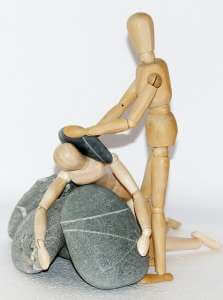
Perpetually on the hunt for shortcuts and memory hacks?
Totally normal.
The only problem with the perfectly understandable human desire to put the cart before the horse and succeed is that memory involves learning.
Learning takes place in time.
There is almost always a curve towards mastery that begins with initial exposure and leads to – not mastery – but the maintenance of mastery.
I don’t care if you’re Da Vinci or Jimmy Hendrix:
If you don’t maintain your skills in any area of talent, you’re going to lose them.
Why “Mastery” Is Just The Beginning Of The Memory Journey
In many ways, mastery is just the beginning of the journey.
You only truly start to understand your craft after you get good at it.
After the doors of perception open wide because you’re getting results using the memory techniques.
Because you’re creating your own mnemonic examples.
Using the real deal. Not memory techniques anyone else handed you. Techniques you crafted on your own using a method.
The Truth About Greedy Learners Hunting For “Hotel Dominic”

Take Dominic O’Brien, for example.
He’s known for a lot of things. Hotel Dominic, the Dominic System, and winning multiple World Memory Championships and other competitions.
He may not agree with this assessment, but as I interpret what I’ve learned from him, he had a goal.
He learned the techniques.
He sat down and created all the figures he needed to remember numbers and cards with a highly personalized P.A.O.
How The Internet Creates Damaging Learned Helplessness
He shared some examples to get people started and serious students of memory improvement worked out the rest on their own.
Enter the Internet.
Next thing you know you’ve got thousands of people begging for his list, Ben Pridmore’s list, my lists, etc.
They want the fish, instead of learning how to fish for themselves.
Maybe I’m just jaded, but here’s the problem with giving too many mnemonic examples:
You can never create enough to solve the fundamental question of understanding the why and how we use these images based on our unique qualities and experiences.
Understanding how to tap into that rich pool of references in each person’s life (see point one above) is the ONLY thing that’s ever going to authentically help.
Use A Memory Method To Create Your Own Memory System Or Go H.O.M.E.
Otherwise, as longtime supporter Alex of this site (J.A. on YouTube) says, “Go H.O.M.E.”
It’s funny pun and paradox that mixes the acronym technique with an important message:
Huge Outcomes Means Exercising.
And to get the outcomes memory training can create for you, please exercise your mind with a proper memory method.
I know, I sound hardcore. Perhaps even dogmatic. But I’m sharing just one of several stoic secrets for using memory techniques that I know will help you faster.
How To Create Your Own 00-99 P.A.O In A Flash
Speaking of having a bunch of images for the digits 00-99, here’s all you have to do:
Learn the Major Method to create your own system.
Create a Magnetic Bridging Figure for each two digit number from 00-99.
Start small at first. Work from 01-10. Then 11-20 and so on. You don’t have to create them all in a single day.
Use pen and paper. As Sharon did:
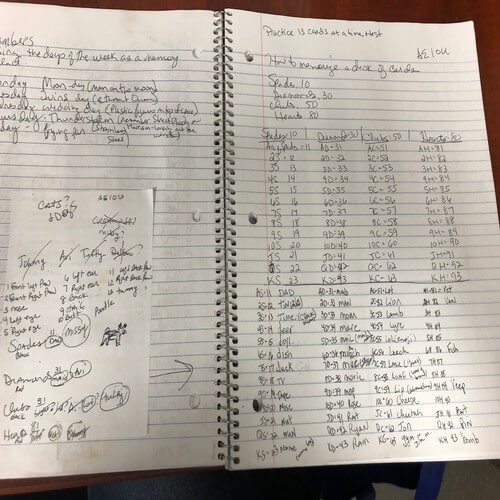
Notice that Sharon didn’t try to get it perfect the first time. Sharon just took action after taking my card memorization course in the Magnetic Memory Method Masterclass. (Like you should too if you want to experience incredible memory improvement fast).
Taking action is essential because:
Reason #3:
A Proper Memory Method Goes Beyond Method of Loci Training
By Creating Connection, Comprehension & Understanding

As Tony Buzan told us on this episode of the Magnetic Memory Method Podcast, there are multiple intelligences.
A proper memory method helps you bring them together.
Magnetic Stations replace the Method of Loci and you can add a Major System 00-99 character to each if you wish.
And as you develop one aspect of the memory method you choose, you’ll quickly discover other levels you want to learn.
Music mnemonics may come to mind. Or languages. Or philosophy.
Nothing will be out of reach as you continue to grow your skills.
Tony Buzan’s Incredible Memory Improvement Formula
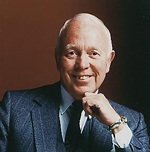 And growth can be constant. In Buzan’s classic, The Memory Book, he gives this formula:
And growth can be constant. In Buzan’s classic, The Memory Book, he gives this formula:
E + M = C ∞
It breaks to the idea that Energy + Memory = Creativity Eternally.
And although each of us will eventually pass on, I think he’s right about the eternal part to a degree.
After all, as long as good people like us keep the mnemonic tradition alive, it will be passed down through the generations.
And that means you and your influence truly can be eternal.
Speaking of which:
Reason #4:
A Method Based On Multiple Memory Improvement Books Involves You In A Powerful Tradition

Not everyone knows this about Aristotle, but he wrote a book about memory.
I wrote a commentary on it which is available with the original text in English and my commentary. In this commentary, I connect Aristotle with Plato’s thoughts on memory before him.
And then I connect the Magnetic Memory Method to more and then more and then more.
Why did I do this?
Because there’s so much untapped knowledge about creating the best memory method on earth to be found in writings about memory from the past.
In fact, the more I read the tradition, the more my memory improves. And that’s important because it translates directly into the help I can give students of the Magnetic Memory Method.
And it’s not just Aristotle. Here are some other figures from history whom you may not have known used memory methods:
Simonides of Ceos
The unknown author of Ad Herrenium
St. Augustine
Matteo Ricci
Giordano Bruno
And that’s to mention some interesting contemporary figures. I’ve already mentioned Dominic O’Brien and Tony Buzan, but there’s also:
Doctor Yip
Florian Delle
Nelson Dellis
Jonathan Levi
Alex Mullen
… plus, all the exciting things going on with technology with people like Gabriel Wyner for memory and language learning through the Fluent Forever app.
The list goes on and on, and the direct benefit is that this tradition provides an endless wealth of inspiration and new ideas.
Reason #5:
Memorization Techniques Based On Methods Create Learning Flexibility

“Be water, my friend.”
Wise words from Bruce Lee.
This principle matters for your memory improvement journey with memory techniques because information is like the wind.
And your brain is often like a brick wall.
Ever seen how the wind can pick up a tree and toss it against a building?
Suddenly that big and tough brick wall doesn’t look so tough anymore, does it?
But if it had been water, it could move out of the way and possibly even used both the tree and the wind as a tool for its own purposes.
So when you’re looking for the right memory method to help you learn and remember the information that will pass the exam or scratch that language off your bucket list, make sure it’s flexible.
No difficult information ever has to break your mind again.
Reason #6:
Brain Health Starts As An Idea You Need To Remember

A lot of people are worried about Alzheimer’s and Dementia.
For good reason:
Memory loss is a severe and life-destroying pain in the butt.
It doesn’t have to be a serious disease or brain trauma that drags you life down either.
Lack of focus and concentration sucks too.
And when you’re worried about these problems and the memory loss from stress they cause at work, your sleep suffers.
How To Avoid The Punishing Hell Of Poor Memory
You probably don’t focus nearly as much attention to your diet, and physical fitness as you should. As a result, things spiral further down into the hell of poor memory.
Luckily, having the right memory method can help. Not only will you perform better in your studies and at work.
You’ll also remember your to-do lists. You’ll remember which foods that improve memory you should be eating. You’ll remember the exercises you should be doing at the gym.
When you can keep your focus on all of these matters and consistently follow through, your memory will naturally experience a boost.
Reason #7:
The Right Memory Method Creates Belonging
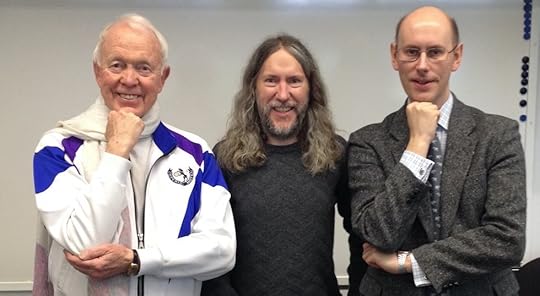
Did you know there are entire communities of people who use memory techniques?
They have a special lingo. You’ve read some of the terms on this page already.
But there’s more to discuss:
The Roman Room
The Link Method
The Pillar Technique
“Ghosting”
The Ugly Sister Effect
The Telesynoptic Memory Palace
Yeah, okay, it can get a bit nerdy from time to time.
But that’s what makes it fun!
You don’t have to know all the terms. Certainly, no one is going to exclude you from the club if you don’t understand.
Far from it!
Everyone who takes their memory methods seriously will help you understand everything from The Wardrobe to the Millennial P.A.O.
Once you’re in the club, you’ll find a host of friends who share your interest in learning and remembering without the hassle of forgetting.
Why Friendships With Mnemonists Improves Your Memory
These friendships will help you find inspiration and accountability.
They’ll help you experience a sense of belonging.
They even challenge you from time to time.
They’ll help you accomplish the ultimate benefit of having a reliable memory method of all.
Reason #8:
A Life Devoted To Learning How To Memorize Reveals The Truth

The main reasons I use memory techniques and teach them so passionately come down to this:
Mnemonics saved my life.
I was depressed, about to drop out of university and intensely suicidal.
Being able to remember complex philosophical terms and make progress on learning a language gave me hope, confidence and courage.
It also enabled me to live the life of my dreams and travel the world.
It allowed me to visit the statue of Bruno in Rome many times pictured above. He was a man who died for the truth and you can hear all about in this interview with Scott Gosnell about Bruno’s powerful memory improvement book.
And as I learned about how meditation helps improve memory, I added this tool to my daily practice of mental improvement.
You Can Easily Memorize The Truthful Information
That Genuinely Improves Your Life
Later, I applied my ability to learn and remember my goals of optimizing my health (big thanks to Jonathan Levi for mentoring me on the specifics. Also on bitcoin and generally what I need to learn and remember about finances.)
And eventually, I started to use the memory techniques I’ve been honing for my personal practice and teaching to memorize Sanksrit.
There still exist ancient tomes of philosophy that contain special formulas for scrubbing the mind clean of fear, worry, doubt, and stress.
Sure, I still fall prey to these things once in awhile.
But thanks to memorizing lines from the Ribhu Gita provided by Gary Weber in Evolving Beyond Thought, I feel more aligned with reality than ever before.
The tradition is sometimes called Vedanta, or Advaita Vedanta. It’s deeply related to memory because to use the mind-cleansing tools well, you’ve got to memorize them.
I won’t go into what this philosophy helps one achieve just now.
But maybe you can relate to wanting to hold sacred knowledge in memory.
Be it religious scripture, a speech, a quote, or the entire vocabulary of a sacred language you want to commit to memory.
If You Can Remember More Things That Are True, You Can Live A Better Life
The best part of having a reliable memory method boils down to holding the truth in mind.
Holding it close.
And using the truth to live a better life.
The truth will also help you scrub out the false illusions that bind you down and keep you in ignorance.
So what do you say?
Do you think you could use a better memory method to help you reach your goals in life?
If the answer is a resounding yes, let me know in the discussion below and post your questions about making these extraordinary memory techniques work for you.
The post 8 Reasons You Need A Flexible Memory Method Not A Memory System appeared first on Magnetic Memory Method - How to Memorize With A Memory Palace.
June 26, 2018
2 Powerful Recovered Memory Palace Training Exercises With Olivia
 What if I told you that recovered memory is a skill that you can use to create a better Memory Palace Network?
What if I told you that recovered memory is a skill that you can use to create a better Memory Palace Network?
And what if you had a simple autobiographical memory test you could give yourself again and again to keep improving your memory?
If that sounds interesting to you, you’re in luck.
Tap or click play now and discover:
Exactly how to unpack memories from your past you may have lost – and turn them into a Memory Palace Network!
How I memorized the dates in Walter Ong’s Ramus, Method, and the Decay of Dialogue
More on Lynne Kelly’s amazing account of memory and memory techniques of the Aborigines and other prehistoric groups in The Memory Code
The simple steps of this incredible memory training exercise you can use to help recall more from your past
The significance of juggling information in your mind without the aid of technology and the quest of balance in the age of computers
How to map out a simple Memory Palace using your elementary school
The right questions to ask yourself while completing this autobiographical memory and episodic memory training activity.
How you can benefit from these brain exercises over the long term.
How these kinds of memory recovery exercises can help you deal with depression in ways that improve memory
The importance of taking consistent action along your memory improvement journey
And that’s just the beginning!
The Profound Reasons Why You Have A Super Autobiographical Memory
In this episode of the Magnetic Memory Method Podcast, I introduced a Memory Palace training exercise with Olivia.
Olivia had a blank spot in her mind when I met her.
So I took the opportunity to teach her a quick Memory Palace training exercise that anyone can do.
It will let you experience recovered memory at a profound level that helps you learn languages.
And when you unlock all of those Memory Palaces lying dormant in your autobiographical memory…
Recovered Memory Can Become
The Most Powerful Memory Training Asset In Your World
Autobiographical and episodic memory involve personal memories from the past. However, they are not exactly the same.
If you’re interested in improving your episodic memory, check out the links in the resources section below.
You can also watch this video version of the session with Olivia:
The Truth About Your Magnetic Repressed Memory Symptoms
Okay, okay, I’m being a bit dramatic.
But having worked with thousands of people over the years, I’ve noticed something.
People are afraid to use Memory Palaces.
I call this fear “Memory Palace Scarcity.”
When so many people around the world just want to remember what they learn…
Only to get hung up on not having enough Memory Palaces…
Well, then, yes! I do think this problem counts as “repressed memory.”
You see, many people are chasing after a solid flashbulb memory definition.
The True Path To So-Called FlashBulb Memory
That search will never end unless you create multiple Memory Palaces and Dive in to the exercise I gave Olivia on this episode of the Magnetic Memory Method Podcast.
It’s powerful because it completely eliminates Memory Palace Scarcity.
Kind of the same way using The Freedom Journal for language learning keeps you focused on making the most out of your time.
Give the quick autobiographical Memory Palace training exercises you’ll learn on this episode a try.
This process will improve your practice in creating and finding more Memory Palaces.
But you’ve got to use them for the future as well as the path.
Sure, the exercises you’ll learn will help you recover some of your past.
But the most important element is how you use your Magnetic Memory Palace Network to easily learn and remember information for the future.
How Accurate Are Your Memories?
I hope that Olivia’s openness to learning about brain exercises and the Memory Palace exercise I gave her inspires you to dive deeper into your autobiographical memory.
I’m confident too that you’ll be amazed by how learning more about your episodic memory helps you on your journey to remembering numbers, facts and vocabulary.
They are truly all intertwined.
And from there, you just need to give yourself simple memory tests.
Oh, and if you’re a parent, combine this episode with these memory improvement techniques for kids.
Let me know in the comments below how you fare!
Oh, and if you haven’t got this yet:
… don’t you think you should?
It will be useful for you if you master the basic foundations and fundamentals of creating Memory Palaces to make the most out of it.
Further Memory Improvement Resources:
Episodic Memory And How To Improve It: A Step-By-Step Training Guide
The Memory Code: Prehistoric Memory Techniques You Can Use Now
Ramus, Method, and the Decay of Dialogue by Walter Ong
3 Shocking Ways Smartphone Addiction Erodes Your Brain And Memory
The post 2 Powerful Recovered Memory Palace Training Exercises With Olivia appeared first on Magnetic Memory Method - How to Memorize With A Memory Palace.
June 20, 2018
How Jessie Villalobos Got A Promotion – Magnetic Memory Method Review

This is perhaps the best Magnetic Memory Method Review online so far:
“The more you try it, the better you do. Every attempt is incrementally better than the last time.”
-Jesse Villalobos
Since constant improvement is what the memory method taught on this website is all about, I was delighted to hear these words from one of our course participants.
Even better:
In this episode of the Magnetic Memory Method Podcast, you can hear them directly from Jesse Villalobos too.
Scroll up and click play. Listen in we talk about:
How Jesse based his PAO system on the Major Method for remembering numbers…
Jesse’s Magnetic Journey using the PAO system (Person Action Object)…
How Jesse used this approach to get a raise and a promotion at his job!
Of the many tips you’ll discover, here’s one of the most important points:
Jesse keeps listening to the Magnetic Memory Method Podcast for motivation week after week. Yes, even though he completed the Magnetic Memory Method Masterclass.
This point is important. Jesse’s approach combines a solid study ethic and continually feeding himself with ideas and inspiration.
And when Jesse started, he was serious about getting results. He wanted to get really good at memorizing numbers.
His success secret?
Taking action!
It’s not just about learning about memory techniques. It’s about applying them in meaningful ways one S.I.P. at a time:
S.I.P.
Study memory techniques
Implement memory techniques
Practice memory techniques with information that improves your life
It’s this approach that helped Jesse get the mastery over the Person Action Object and Major Method that he wanted.
Aside from remembering numbers, Jesse also learned . This skill provided other unexpected benefits from memory training that Jesse hadn’t even anticipated!
If you’ve been looking for an extra bit of insight about how the Magnetic Memory Method can help you, try Jessie’s advice:
Just dive into learning and using memory techniques.
Download this episode and learn from Jesse’s experiences and insights. You’ll learn exactly how improving his memory has helped his personal confidence and well-being.
Press play now and you’ll discover:
How memory techniques help Jesse in his work. It involves remembering a lot of numbers.
Why using memory techniques is an “out of body experience.”
Jesse’s feeling about how he gains more energy than he burns using memory strategies.
Examples of a well-functioning Person-Action-Object system to memorize numbers based on the Major Method.
The process of how Jesse created his Magnetic Memory Palace Network and how it all works in detail.
The importance of drawing your Memory Palaces for total success.
How Jesse handles problems with ghosting or the Ugly Sister Effect.
How Jesse discovered the Magnetic Memory Method and what it has brought to him both personally and professionally.
How Jesse got a raise and promotion. By demonstrating competence, his co-workers started perceiving him as an expert thanks to Magnetic Memory Palaces and memory techniques.
A family-related memory issue that encourages Jessie to keep his mind active.
The positive influence of listening to Magnetic Memory Method Podcast over time.
Jesse’s perspective on avoiding perfectionism.
Other memory improvement books and courses that really impacted Jesse.
Do you have questions about how the Magnetic Memory Method can help you perform better at your work?
Do you want more answers to your questions about mnemonics?
If so, please dive into the episode and learn more about how you can get on a call with me. If you want me to help you transform into a walking, talking mnemonics dictionary, I’d like to help.
Further Memory Improvement Resources:
Get Good At Remembering Numbers
How to Memorize Numbers With A PAO System [Person Action Object]
Major System Secrets And The Future Of Your Memory With Florian Dellé
Want More Magnetic Memory Method
Reviews and Testimonials?
Lee Escobar’s Magnetic Memory Method Review and Testimonial
Paul Deery’s Memory Improvement Demonstration and Magnetic Memory Method Review
The Magnetic Memory Method Testimonials and Reviews Page
The post How Jessie Villalobos Got A Promotion – Magnetic Memory Method Review appeared first on Magnetic Memory Method - How to Memorize With A Memory Palace.
June 13, 2018
How to Improve Memory for Studying (7 Powerful Tips)
 Do you want to know how to improve your memory for studying?
Do you want to know how to improve your memory for studying?
Who doesn’t?
After all, it’s the 21st century and there’s so much to learn!
Seriously:
There’s too much to study in too little time – especially before an exam.
But it’s not just a time issue.
It’s not just an issue of volume when it comes to so many books and videos to consume.
The core of the problem isn’t any of those things.
The core of the problem is memory…
The things that your brain just can’t memorize no matter how many times you repeat them.
Why?
Because you don’t have a strategy for managing your learning and memory.
But don’t worry!
In this article, I will show you seven powerful techniques to help you remember anything you have to study. You’ll learn everything far more easily – facts, dates, formulae, equations, whatever.
These techniques will make it far easier for you to ace your next exam.
Let’s dive in.
1. The Memory Palace (The Top Recommendation)
Want just one simple method that helps improve memory for studying?
Look no further than the Memory Palace.
Memory champions and experts all agree that it’s the most effective method to remember anything at all. In fact, one expert used the technique to memorize the value of Pi till nearly 112,000 digits.
This memory technique was developed in Ancient Greece. It is sometimes referred to as the ‘Method of Loci’ or ‘Cicero Method.’ You might also hear it called the ‘Roman Room’ or the ‘Journey Method’.
Although there are many variations, here’s the core of how it all works.
With the Memory Palace technique, you associate each piece of information you want to memorize with parts of a location that you are very familiar with – such as your house or your school campus.
Why “Method of Loci” Memory Technique Is Too Vague…
In the Magnetic Memory Method, we don’t use the term “loci.” It’s too vague.
Instead, we work with Magnetic Stations. On these stations we place our Magnetic Imagery.
For instance, if you wanted to remember a number of important dates about the Second World War, you could ‘file them’ in your medicine cabinet.
Or, better said, “Magnetize” them in place. Associating each bit of information with a physical object within a familiar space helps the brain store the information.
More than just store it, your brain stores the study material systematically and retrieves it easily when needed.
Just make sure to draw your Memory Palace first for the best results. Like this:

Seriously go ahead and draw your Memory Palaces. Once you know the strategy behind why Magnetic Memory Palaces serve better than the rest, each one should take 2-5 minutes (or less).
The best part?
You can use this memory retention technique to remember complex terminology, numbers, formulae – anything at all.
If you are not a ‘visual’ person, you can still use the technique.
You can also associate pieces of information with sounds, smells, touch – various sensory elements within the location. You do this by using the full range of the Magnetic Modes taught right here in this special infographic:
Probably the biggest strength of the Memory Palace technique is that you can combine it with other mnemonic methods to improve your long-term memory. I will show you a few examples of how to do this in the following sections.
To learn about the Memory Palace and what the Magnetic Memory Method brings to the game in more detail, check out this article.
2. Acronyms to Improve Memory for Studying
Acronyms are the most commonly used memory technique and are great for remembering short lists or sequences.
You have probably learned ‘PEMDAS’ in school – a sequence for solving equations. It stands for Parenthesis, Exponents, Multiplication, Division, Addition and Subtraction.
Another common acronym to help you remember a geographical list of names is HOMES, which is used to remember the Great Lakes – Huron, Ontario, Michigan, Erie, and Superior.
Here’s a simple tip to create your own acronyms for remembering things better.
According to the Cambridge dictionary, acronyms are constructed with the first letter of each constituent word and they actually sound like words. That’s what makes them easy to remember.
We also use acronyms in the Magnetic Memory Method training, such us:
D.O.C.
Doing is the Origin of Consistency
Doing is the Origin of Creativity
Doing is the Origin of Courage
Doing is the Origin of Clarity
Doing is the Origin of Control
To get into the “doing” of memory techniques that ultimately leads to control over your memory, all you have to do is S.I.P.:
Study memory techniques
Implement memory techniques
Practice memory techniques with information that improves your life
And as you saw in the infographic above, COG KAV helps us remember all the Magnetic Modes:
Conceptual
Olfactory
Gustatory
Kinesthetic
Auditory
Visual
And let’s not forget the Magnetic Mode of space. That’s the Memory Palace itself.
But moving from these examples of acronyms, let’s get back to the technique of using them.
You might be wondering…
What do you do if the first letters don’t form a ‘word,’ because of a lack of vowels in the middle or any other reason?
Forget the definition and get creative.
Try changing the word sequence or using the second or the last letter instead of the first. If there is no vowel, pick up a second letter from a word. A common example is AWOL (Absent Without Leave.)
If you like acronyms, try combining them with the Memory Palace technique. Since each acronym is a word, it’s easy to associate them with a specific object or location in your house. That will make it even easier to remember.
3. Spaced Repetition for Memory Improvement
Here’s a well-known fact about memory – the more you reinforce something, the easier it becomes for your brain to recall it.
However, to improve memory for studying, when you reinforce something is far more important than how often you reinforce it. Sisti, Glass and Shors called this phenomenon the ‘spacing effect.’
In the spaced repetition method, you practice remembering at the right time. The simplest way to apply this memory method is to use flashcards when you study.
While going through your flashcards, divide them into three bundles. If you remember something clearly, those cards go into the ‘Easy’ pile. You don’t have to study those flashcards again for a week or two.
If you moderately remember something, keep it in the ‘Medium’ pile and revisit it after a few hours or a day. And if you cannot remember something at all, place it in ‘Hard’ and study it again within the next 10 minutes.
Simple, and yet effective! At least… lot more effective than spaced-repetition software.
And if you’re in the Magnetic Memory Method Masterclass, you’ll know how to combine the cards with the Memory Palace.
In brief: Anytime you have words that are ‘Medium’ or ‘Hard’, include them in a Memory Palace.
Then, use all of the Magnetic Modes to create Magnetic Imagery that helps you remember the target information. That will make the information on your cards far easier to recall.
4. The Major Method for Memory Improvement
Want an effortless way to remember numbers for studying – in history, maths, physics, etc.?
Use the Major Method, also called the Major System or Harry Lorayne’s Number Mnemonics. Geeks also call it the phonetic mnemonic system and digit-consonant system.
Quite a mouthful! So, let’s just stick with the ‘ Major Method’! 
Here’s how it works.
In the Major Method, you associate each number with a sound, typically, a consonant. Here’s the system most people follow:
0 = soft c, s or z
1 = d, t
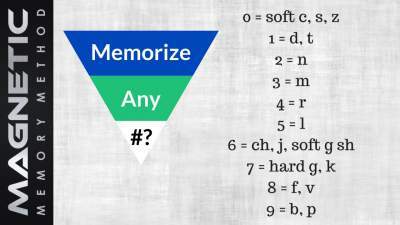
2 = n
3 = m
4 = r
5 = l
6 = ch, j or sh
7 = k
8 = f or v
9 = b or p

The first step is to memorize these associations between numbers and letters. Then use these associations to form words from numbers.
For instance, 22 could be “nun” (n+n)
54 could be “liar” (l+r). Personally, I think of Jim Carrey in the movie “Liar Liar” with a lyre to help make it even more memorable.
To remember longer sequences of numbers, you need to combine the sounds you have made. If you want to remember the number 2254, you could visualize a nun punching Jim Carrey for lying!
Make the image as animated and ridiculous as possible, and it will stick in your mind!
If you can, create a fixed image for every number from 0 to 99. That will make it easier to combine them to remember longer sequences of numbers used in mathematics, physics, chemistry or engineering.
If that sounds like a lot to you, just associate a fixed object for each number from 0-9.
If you want to take the Major Method further, check out this article about how to combine it with the Memory Palace Technique.
5. Improve Your Focus to Improve your Memory
How often do you get interrupted when you study?
Texts, app notifications, YouTube, Netflix or just a noisy room – students face dozens of distractions and interruptions every single hour.
These factors make it close to impossible for you to reach a high level of concentration – which is terrible news if you are trying to improve memory for studying.
Researchers from MIT have found that it’s easier to form a long-term memory when your mind pays close attention to a task. You will have to minimize distractions from devices or people around you if you wish to remember things better.
Here are a few ways:
Mute all notifications when you study. If you have an iPhone, just activating the ‘Do not disturb’ mode will do the trick.
Try to isolate yourself from people you know while studying. Go to a library or a café where you won’t be disturbed.
Practice meditation for just a few minutes a day. Research (Maclean et al. 2010) has indicated that just basic meditation helps us focus far better. You can learn to meditate in only a few minutes from this article.
Use app blockers like Freedom.to to block YouTube and other distracting sites while studying.
Work on one topic at a time and avoid multitasking and switching tasks.
6. Lifestyle Changes to Improve Memory for Studying
Your lifestyle – your food, sleep and activity levels have a significant impact on your memory.
Sleep
Most students try to gain more time to study by skipping out on adequate sleep. It just makes things worse because lack of sleep affects memory as well as several other cognitive abilities.
Several studies by Diekelmann and Born have shown that sleep helps in procedural memory formation, learning and creativity. In fact, sleep deprivation can even make you remember things incorrectly.
Eight hours is ideal, but at least make sure you get seven hours of sleep every night.

Video course and Ebook in the Magnetic Memory Method Masterclass
Food
Foods abundant in saturated fats and trans fats such as red meat, butter, etc. are quite damaging to learning and memory. Students also tend to eat a lot of junk food (especially during exam time) which are worse for your brain.
Numerous studies have shown that these foods can even lead to Alzheimer’s disease in the long-term and other conditions that damage brain health and cause memory loss.
Instead, to improve your memory power for learning, try to have more of fish, olive oil, whole grains, walnuts, blueberries and other foods that fall in the ‘Mediterranean diet’ and are excellent for your brain.
Exercise
Exercise is well known to improve cognitive performance in several ways such as improved mood, better concentration, more alertness, etc.
So, it’s naturally very effective for improving memory. Exercise also causes the release of a protein called cathepsin B in the brain. This stimulates the growth of neurons (brain cells) and forms additional connections in the hippocampus – an area of the brain vital to learning and long-term memory.
7. Recall Before Writing
Teachers encourage us to write things down to remember things better. Adding a couple of steps to this process can make a vast difference to your ability to learn and memorize things quickly – especially before an exam.
First, recall and mentally repeat what you have to write down rather than just copy it mechanically.
This process isn’t difficult to do because the information will stay in your short-term memory for around 10-20 seconds if you have paid attention. And mentally recalling it right then it an excellent way of transferring it from your working memory (short-term memory) to your long-term memory.
Next, take a few seconds to store that piece of information in your Memory Palace. That will consolidate that memory even further.
Are You Inspired To Try These Memory Techniques?
Out of all these techniques, the Memory Palace happens to be the most effective and versatile method. You can easily combine it with other techniques to build an excellent memory. To learn the Magnetic Memory Method at no charge, get started by enrolling for my Memory Palace Mastery in 8 Steps Course:
And let me know in the comments below:
Which of these ways to improve memory for studying are you going to try today?
The post How to Improve Memory for Studying (7 Powerful Tips) appeared first on Magnetic Memory Method - How to Memorize With A Memory Palace.
June 7, 2018
Binaural Beats And Memory: Can This Crazy Music Make You Smarter?
 It’s a popular perception among many people that listening to binaural beats has a special effect on the brain.
It’s a popular perception among many people that listening to binaural beats has a special effect on the brain.
They think binaural beats can help you follow a diet or stop smoking.
Or they think these sounds can amp you up for a competition or calm you down, or even improve memory recall, focus and concentration.
The question is…
Doesn’t listening to any type of relaxing music have a similar effect?
Possibly.
In this post, we’ll find out if listening to specific frequencies can have a better impact on your mental prowess than listening to Mozart for Pink Floyd!
What Are Binaural Beats?
The word binaural means “having or relating to two ears.”
The process works by sending a slightly different sound frequency to each ear. This has to be done simultaneously and through earphones or headphones.
When two different pure tones are presented separately but simultaneously to each ear of a listener, the listener hears the illusion of a third tone.
This third does “appears” in addition to the two pure-tones presented to each ear. And it is this third tone that is called a binaural beat.
Let’s break this down:
When you play a 350 Hertz (Hz) tone in the left ear and a 360 Hertz tone in the right, it yields a beat with a frequency of 10 Hertz. This third beat is the binaural beat.
The brain then uses a process known as ‘frequency following response’ to follow along at the new frequency (10 Hz). This process produces brainwaves at that rate of Hertz.
However, this outcome (apparently) occurs only if the the difference matches the alpha frequency range that lies between 7-11 Hz.
Music or white noise embedded with binaural beats is very often used along with different meditation techniques and positive affirmations to gain varying results.
In the memory training and memory improvement world, some claim you will experience results ranging from improvement in recall, concentration, focus, creativity and alertness.
There is more:
Listening to these beats is also said to provide relaxation, stress reduction, pain management, and improved sleep quality.
Who Heard Them First?
A Brief History of Binaural Beats
Binaural beats were first described in 1839 by Prussian scientist H.W. Dove.
However, it was Gerald Oster’s article in Scientific American in 1973 that brought this process to modern attention.
According to Oster, the tones needed to produce binaural beats had to be relatively low-frequency and the beats themselves were in the range of one to 30 hertz. This is the range the human brainwave frequencies fall in.
What to know the real story?
Humans have the ability to “hear” binaural beats as a result of evolutionary adaptation.
[smart_track_player url=”http://traffic.libsyn.com/magneticmem...″ social_linkedin=”true” ]
“Many evolved species can detect binaural beats because of their brain structure. The frequencies at which binaural beats can be detected change depending upon the size of the species’ cranium. In the human, binaural beats can be detected when carrier waves are below approximately 1000 Hz.” (Oster, 1973)
The Binaural Process In Real Music
Of course, binaural beats in terms of therapy is quite different than the binaural process found in music. This process was apparently invented by Manfred Shunke who used models of the human head created with the help of computer design software.
As music historian Rob Bowman wrote in the notes for Lou Reed’s Between Thought and Expression:
“The detail was as precise as possible down to the size, shape, and bone structure of the ear and ear canal. Microphones were then designed to fit each ear so, theoretically, what they recorded would be exactly what a human sitting in the position the head was placed would actually hear.”
Binaural Beats To Manage Pain:
Why The Truth Matters For Your Memory
Chronic pain impacts between 10-50% of the adult population, while costing U.S. businesses over $61 billion annually.
The neuromatrix theory suggests that the brain’s inability to return to a state of equilibrium is at the crux of chronic pain (Melzack, 2001; Melzack, 2005).
Binaural beats has been effective in synchronizing brain waves, also known as entrainment, with an external stimulus (Kennel, Taylor Lyon, & Bourguignon, 2010), and has been associated with a number of positive psychological outcomes (David, Katz, & Naftali, 2010; Lane, Kasian, Owens, & Marsh, 1998).
Research shows that an external audio protocol of theta-binaural beats is effective at reducing perceived change in pain severity.
How does this affect your memory?
The answer is simple:
Pain free people pay better attention to their surroundings.
Freedom from pain means that your levels of focus and concentration are automatically better than when impacted by ongoing or recurrent pain.
Being pain free is especially important for learning, something that requires high levels of concentration.
Speaking of which:
Do Gamma Brain Waves Improve Memory & Concentration?
The highest frequency brain waves are apparently called gamma waves. These waves can have a frequency of anywhere between 25 and 100 Hz.
People whose brains produce more gamma waves are said to have greater ability to concentrate, focus and experience higher levels of cognition.
A recent study by Jirakittayakorn and Wongsawat tried to find whether “modulation of the brain activity can lead to manipulation of cognitive functions. The stimulus used in this study was 40-Hz binaural beat because binaural beat induces frequency following response.”
According to the study, listening to 40-Hz binaural beat for 20 minutes enhanced working memory function evaluated by word list recall task.
Does that mean we can change our brainwave patterns by listening to specific sounds?
Maybe…
But also maybe not!
A research project by Richard Davidson, a neuroscientist, found that the brainwaves of trained monks who regularly engaged in meditation produced powerful Gamma waves, whereas the control group – with non-meditating volunteers – had little to no gamma brain waves.
What does this fact imply?
One way to improve concentration is to go Buddha style and practice long-term or short-term meditation.
Within a week of consistent meditation, you can start to experience improved concentration.
Meditation can be used to remember something because better concentration has a direct link to improved memory.
But Can Binaural Beats Help Memory?
Not in theory or practice according to a research article by David Siever in 2009 called Entraining Tones and Binaural Beats.
But before we go any further, the actual claims are important to look at.
So let’s take a step back and try understand how binaural beats work.
The proponents of binaural beats claim that it induces brainwave “entrainment.”
This entrainment supposedly influences and drives brainwave activity to a more desired mental state.
More specifically, entrainment is a “synchronization of two or more rhythmic cycles” and the process of brainwave entrainment relies on the natural phenomena of synchronization.
Think of it like this:
When you strike a tuning fork and then place another one next to it, the second tuning fork automatically starts to vibrate at the same frequency.
This is a natural synchronization. Pendulum clocks, metronomes, fireflies are few other examples of natural synchronization.
However, Siever states that entrainment occurs only when a constant and repetitive sound of sufficient strength to “excite” the thalamus is present.
Siever also noted that binaural beats are not very noticeable because the modulation depth (the difference between loud and quiet) is very small at just 3db, a 2 to 1 ratio.
Here’s a longer quote:
“This means that binaural beats are unlikely to produce any significant entrainment because they don’t activate the thalamus. But they do have some hypnotic and relaxing effect by way of dissociation (as does white noise and music).
This outcome may be, in part, due to the Ganzfeld effect. The Ganzfeld effect is the process where the mind quietens as a result of having a monotonous sensory input.
A natural example of the Ganzfeld effect may be experienced while sitting in a large field in the country while staring into the wide, blue sky while listening to the white noise from the fluttering of leaves on the trees – away from the noise and other stimulation of urban life.
In other words, thanks to the Ganzfeld effect, binaural beats, through passive means, may help a person relax.
If, in theory binaural beats do not produce entrainment, do they produce entrainment and drive brainwaves in reality? The simple answer is NO!”
It’s not just Siever!
In another study, Gerald Oster used an EEG oscilloscope to conclude that binaural beats produce very small evoked potentials within the auditory cortex of the brain.
What does this?
It means that binaural beats are of little benefit in producing AE or auditory entrainment. (Oster, G. (1973). Auditory beats in the brain. Scientific American)
Researcher Dale S. Foster also found that binaural beats in the alpha frequency produced no more alpha brainwaves than listening to a surf sound.
Here’s Foster’s conclusion:
“The analysis of variance of the data revealed that there were no significant differences in alpha production either within sessions across conditions or across sessions.
Although alpha production was observed to increase in the binaural-beats condition early in some sessions, a tendency was observed for the subjects to move through alpha into desynchronized theta, indicating light sleep. Subjective reports of “dozing off” corroborated these observations. These periods of light sleep — almost devoid of alpha — affected the average alpha ratios.”
A More Effective Way To Gain Mental Prowess
The beauty of the human brains is that it needs a goal to improve.
Your memory improvement training should always be linked to memorizing information that will immediately improve your life.
Moreover, the memory improvement activities should always be measurable since tracking your outcomes leads to rapid improvement.
This is where the secret method of building Memory Palaces the Magnetic Memory Method way comes into play.
Using this Method, you not only get to remember the information faster, but also get predictable and reliable permanence that grows in strength each time.
Even better:
All other memory techniques including listening to binaural beats can be used inside of Memory Palaces.
But this never takes place the other way around (For example, you can’t use Memory Palaces inside of the Major Method the way you can use the Major Method inside of Memory Palaces.)
If you are looking for a complete brain workout try this brain fitness method…
You can also see more Unconventional Techniques Guaranteed To Help You Conjure Your Best-Ever Ideas.
The Ultimate Memory Improvement Beats?
Listen to Music That Inspires!
Use sound beats or music as a means of relaxation, rejuvenation or inspiration.
When you feel relaxed and inspired you can create effective Magnetic Imagery that will enable you to build better Memory Palaces to improve recall, retention and memory.
Now is that music to your ears, or what?
The post Binaural Beats And Memory: Can This Crazy Music Make You Smarter? appeared first on Magnetic Memory Method - How to Memorize With A Memory Palace.
May 22, 2018
3 Effective Brain Training Exercises for Mental Illness Sufferers
 This guest post on effective brain training exercises for mental illness sufferers comes from Alex Moore.
This guest post on effective brain training exercises for mental illness sufferers comes from Alex Moore.
Take it away, Alex!
Would you like some brain training exercises to keep you sharp and on top of your game all the time?
I hope the answer is a resounding, “Yes!”
Here’s why:
Conditions such as mental illness and aging contribute to mental decay.
All the more so if you’re already suffering from mental illness, not to mention the medicinal side effects of psychiatric medicine. These medicines, even when useful, can cause your memory a lot of harm.
Here’s the good news:
Losing control over your cognitive functions can be hard, but it doesn’t need to happen. There is a way to avoid cognitive decline, and all it involves is training your mind.
In this post, you’ll learn everything you need to know about brain training exercises to help keep your memory healthy.
All About Brain Training
Although many people believe that brain training is a modern invention, it actually has a rich history. To take one example, check out the brain training exercises admired by the Edwardians nearly 100 years ago.
In fact, mnemonic systems were all the rage in 19th century Great Britain. Famous author Mark Twain even had one called “The Memory Builder”.
Then there’s Pelmanism.
Like the brain exercise training favored by the Edwardians, Pelmanism is a product of Great Britain, and became very popular during the first half of the 20th century.

Get this:
More than 500,000 people reportedly used it, and one of them was the Prime Minister of the country himself!
Why was it so popular?
First, the system revolutionized brain training because it targeted the same mental functions we focus on optimizing to this day:
Attention
Concentration
Creativity
The Pelman Scientific Mind Training Program focused on each of these to help people exercise their minds. Participants were mailed monthly booklets with games and exercises designed specifically to stimulate one or more of these functions.
All of which goes to show that brain training isn’t new. And of course, Anthony is always coming up with different brain exercises you can explore. Check these out:
Even better:
We have even more scientific evidence than ever to guide us these days. Modern neuroscience has managed to prove beyond any shred of doubt that our brains are in fact malleable like plastic.
In fact, we all have to ability to modify the structure and functions of our brains.
Of course, a lot depends on the internal and external factors of our lives, such as other bodily processes or environmental changes. But overall, every single person can intervene and create a better mental life.
Sadly, though, cognitive decline is becoming increasingly common past the age of 30. One reason is that people don’t understand the difference between memory loss and forgetfulness.
Nevertheless, slowing down the aging of our brain through training is a prospect that fills us with hope. And research shows that it’s completely achievable.
However, if having a sharper memory is something you aim for, you need to know right now that it takes work.
In order to remain in a constant state of connectedness regardless of whether you’re 30, 50 or 80 years old, you need to push your mind to learn something new each day. There is nothing more stimulating for your synapses than being put at work.
In turn, this leads to tangible improvement in more than one aspect.
For example, according to Dr. Jee Hyun Kim of the Florey Institute, focus diminishes with age.
Due to this deterioration of focus, stimulating your attention regularly can be crucial. By activating the frontal cortex and the hippocampus, you are not working only on this function, but on your memory and thought as well.
How Brain Training Can Increase Focus And Attention
There are many ways to achieve better focus and attention. One possibility lies in a simple, yet intellectually stimulating mobile app.
Similarly, reading new books, especially with a re-reading strategy, or solving math and logic problems puts all the areas of your brain to work and boosts cognition in the process.
Then there’s meditation. You can do a walking meditation or sit just to sit Buddha-style for improved memory and concentration.
And recent studies that will be discussed shortly suggest that it might even help treat mental illness.
Treating Mental Illness With Brain Training Exercises
Let me give you some context:
I have spent the last couple of years researching alternative treatments for mental conditions that affect memory and cognition.
Why did I choose this path?
Well, three years ago, someone I care about deeply was diagnosed with schizophrenia. I have spent all my days since trying to educate myself on the topic as much as possible.
In my journey, I have found that many specialists believe that brain training can help prevent degenerative neural diseases such as dementia or Alzheimer’s.
And that’s not all. In fact, such practices can help with instances of mental illness as well. This comes as great news for the vast community of patients struggling with such afflictions.
Recent medical science-related endeavors back up this seemingly bold claim. A study conducted at McLean hospital in 2017 has uncovered the potentially beneficial results of brain training in the treatment of mental illness, namely bipolar disorder in particular.
The lead scientist was Eve Lewandowski, Ph.D., an assistant professor at Harvard Medical School and developer of McLean’s bipolar disorder and schizophrenia programs.
According toLewandowski, BPD affects the memory, processing speed and executive function of most of the patients who suffer from it. This impacts their daily existence and overall quality of life quite negatively.
Therefore, working on improving cognitive dysfunctions is crucial for symptom relief in this case. And what better way to achieve that than through brain training? Lewandowski’s research found that the participants who used techniques pertaining to this area exhibited visible betterment that was maintained for at least six months afterward, if not more.
She got the idea after noticing how effective this approach was in keeping the symptoms of even more serious conditions such as schizophrenia under wraps.
People going through the four stages of schizophrenia have exhibited visible improvement in their symptoms after cognitive therapy.
In fact, previous trials conducted under the supervision of professor Barbara Sahakian of the Department of Psychiatry at Cambridge have shown that something as simple as playing brain-stimulating mobile games improves cognition among schizophrenia patients. And it helps in areas where drugs have previously failed, which is even more important to keep in mind.
Just imagine how beneficial the effects could be if this would be tried in the long run. Lewandowski and her colleagues support the importance of acknowledging brain training as a viable treatment for mental illness. Modern psychiatry should recognize its merits and integrate it into the roster of available therapies.
But until that happens, you can also try doing at home. To tap into the healing properties of this approach, you don’t need to download a mobile app or buy fancy books and puzzles to keep your mind sharp. There are plenty of mental techniques that you can try at home and see how they work out for you. Here are the best three.
The Best Brain Exercise Techniques
1. Memory Palace
If you’re looking to train your memory specifically, Anthony Metivier’s approach to the ‘Memory Palace’ technique is one of the best to get the job done.
Famous historical and fictional figures alike, such as Hannibal Lecter from the renowned Silence of the Lambs book and film series are perfect examples of how this works.
Association is the key to creating your own memory palace to walk around in whenever you need to retrieve certain pieces of information.
When these have been assimilated long ago, you need to correlate each of them with a specific part of a location. A good starting point is your own house because it is familiar territory. For best results, draw out the floorplan of your first Memory Palace by hand. Like this:
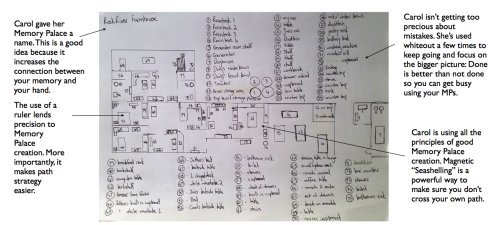
But before you start drawing, walk around your house first.
Then, once your’e done, assign various memories to various rooms.
To take it one step further, do the same thing but using objects within the same space. Fill your memory palace with everything you think is worth remembering, but make sure that you build a strong mental route in the process.
When the time to remember he information comes, simply retrace your steps along that path. It will take some getting used to, and you will surely fumble at first. Nobody is born an expert, and when you’re dealing with cognition-impairing mental illness, it might be even harder. But practice makes perfect, and it keeps your mind sharp too.
Of course, things might not be as simple or straightforward. Sometimes, direct associations simply aren’t possible. This is where your imagination and the ability to create allegories comes in.
For example, let’s imagine you want to remember something that has to do with a dandelion, a hose, and a Calico cat.
You are standing in your living room and there is a dandelion on the table. You go up the stairs, towards your bedroom. A hose is hanging on the door.
You enter, and the most adorable Calico cat is sleeping on your bed, purring. You have now memorized this sequence by simply making associations between its elements and actual, palpable places in your house.
2. Mind Mapping
The concept of mind mapping is a slightly similar one, but it is far more schematic and two-dimensional. In fact, it consists of a visual outline that starts with one core concept and then branches out into information that relates to it.
Some people prefer to do this on paper because they find it stimulates their assimilation of the notions even better.

Such a diagram can represent anything, from words and concepts to more specialized information such as tasks that need accomplishing.
And if you’re not a fan of writing it all out, you’ll be happy to find out that it can be used in combination with the Memory Palace technique. The two have a very strong meeting point between them.
In fact, you can listen to Phil Chambers discuss using mind maps and Memory Palaces together.
[smart_track_player url=”https://traffic.libsyn.com/magneticme...″ social_linkedin=”true” ]
Chambers, a world mind mapping expert, mind maps serve even more complex purposes. A mind map follows all the principles of memory, but it also helps you think. But memory palaces are better for actually remembering information, while mind maps are more suitable for processing and understanding it.

The two are sometimes useless when not together. For this reason, finding a middle ground that includes mind maps into your memory palace can be a great way to stay sharp and on top of your game. Furthermore, together they stimulate more essential areas of the brain, thus preventing premature decay.
3. Dominic System
The Dominic mnemonic system is one of the most famous brain training techniques in the world. It was designed by famous British mnemonist Dominic O’Brien, who also happens to be an eight-time World Memory champion. Most brain athletes use it nowadays to memorize long strings of digits for competitions. So, why is it so effective?

Just like the Major system associates numbers with sounds, the Dominic system notoriously does a similar thing by assigning them the initials of a person’s name. It’s a highly effective person-action system that can be combined with the memory palace technique, thus creating the Hotel Dominic, as many experts lovingly call it.
But O’Brien’s contribution to the world of brain training doesn’t stop here. He also famously established that the strategical recalling of information following a five-step pattern is the best way to cement said information in your brain. This should happen in the following order:
• The first review takes place immediately;
• The second review follows it 24 hours later;
• The third review then happens one week later;
• One month later comes the fourth review;
• And finally, the fifth review occurs a total of three months later.
Thus, in the span of roughly four to five months, you will be able to remember anything.
By sticking to this routine, you will be able to fight the cognitive decay that many mental illnesses bring, too. When your schizophrenia or bipolar disorder are playing tricks on your mind, relying on a strict pattern to memorize relevant information can be a true lifesaver.
Final Thoughts
To sum up, it must be noted that medical science is just now starting to look more into the beneficial effects of brain training. Cognitive dysfunction can be caused by many things. These range from something as naturally occurring as old age to more complex issues such as schizophrenia or bipolar disorder.
Fortunately, practicing one or more of the three techniques discussed above can be beneficial. It is something that can help you refocus and even excel when it comes to memory and thought patterns. As a short recap, these are:
• The Memory Palace.
This famous approach is based on making associations between physical locations and various pieces of information. The best way to build the memory palace is by correlating them with specific spots around your home. The familiarity of the territory is prolific for this purpose.
• Mind mapping. It consists of a series of diagrams that represent two-dimensional connections between concepts. Creating mental maps works best when used in combination with the memory palace. This activates more areas of the brain than the two would alone, thus preventing decay and enhancing performance.
• The Dominic system. Focused on numbers, the Dominic system heavily relies on the connection between these and letters. These usually are the initials of someone’s name. When used together with the memory palace technique, it is known as the Hotel Dominic.
As it has been established, the three techniques are equally efficient standalone as they are when combined. In order to choose what suits your needs, you will need to try them. Presentations and explanations can only do so much.
Nevertheless, having this knowledge is essential for the future. If you or someone you love, as it happened in my case, are slipping down the slope of mental illness, take action now. Explore the possibilities given by brain training and build a better tomorrow.
About Alex Moore
Alex is a Psychology undergraduate who strives to discover the intricacies of the minds of the mentally ill, with the ultimate goal of helping them and those around them. When he’s not writing about the efficiency of memory improvement techniques, you’ll find him contributing to www.schizlife.com.
The post 3 Effective Brain Training Exercises for Mental Illness Sufferers appeared first on Magnetic Memory Method - How to Memorize With A Memory Palace.
May 2, 2018
Why Bilingualism Makes For a Healthier Brain
 Are you a polyglot?
Are you a polyglot?
No, I don’t mean a ghost that walks around the attic making loud noises and moving objects. That’s a poltergeist!
A polyglot, on the other hand, is a more tame individual who is fluent in several languages.
Then there are the hyperpolyglots – those who actively learn and master six or more languages, like Emil Krebs, a 19th-century German diplomat who had mastered around 65 languages by the time of his death.
While only 1 percent of people are polyglots; more than half of the world’s population is bilingual (those who speak fluently in two languages).
Being bilingual (or multilingual) is said to enhance your better problem-solving abilities, and improve your concentration and focus.
These are valuable resources in everyone’s life! And reason enough to start learning a new language.
If you are geared to pick up a new language or just want to get better in your mother tongue, use these five amazing hacks:
And while you practice your German or French, ask yourself this:
Will Being Bilingual Help You Get a Healthier Brain?
Seriously:
There is a ton of research backing claims that being fluent in more than one language is good for your brain.
More importantly:
Unlike other areas of science and memory, few articles evoke grave doubts on the advantages of being bilingual.
That said…
A 2015 article in the New Yorker by Maria Konnikova “Is Bilingualism Really an Advantage?” makes an interesting point:
Konnikova says the bilingual advantage seems to have more of a protective effect on the aging brain than it does anything to enhance executive-control functions of healthy individuals.
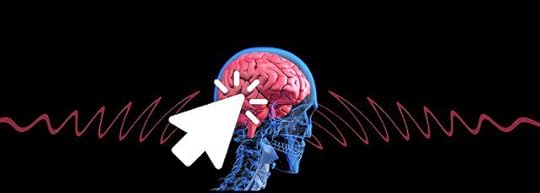
While the Konnikova’s arguments are persuasive, I am sure of one thing:
When you learn a new language and use new words and grammar rules, multiple areas of your brain work together. This is a great long-term workout for your brain.
And since your brain is a muscle, it needs regular workouts to remain strong, supple and stable!
The Inside Story:
Why Bilingualism Is Not Just About
Speaking Two (Or More) Languages
Contrary to general perception, bilingualism is not just about the ability to speak two languages fluently.
There are a lot of little nitty-gritty aspects involved.
For instance:
You could be a “simultaneous bilingual” who learns two languages from birth.
Or, you could be an “early sequential bilingual.”
What the heck do those terms mean?
“Early sequential bilingual” is a fancy term for those kids who speak one language at home but learn to speak the community language at school. There is also the “late sequential bilingual” – someone who grew up with one language and then moved to a country that speaks another.
Why are these terms important?
The differences in how and when you learned your second language often leads to different levels of proficiency and fluency. This, in turn, affects your level of being bilingual.

For instance, if you were fluent in French (along with English) in high school but have been using only English ever since, your bilingualism and its related advantages may have deteriorated.
In fact, according to a study, simultaneous bilinguals and early sequential bilinguals show different levels of behavioral performance in a lexical representation task that measures how quickly you can classify a stimulus as words or nonwords. (Sebastián-Gallés, Echeverría & Bosch, 2005)
Remember this:
The more articulate you are in a language, and the more fluently you use both your languages in your daily life, the more bilingual you will be.
“You have to use both languages all the time. You won’t get the bilingual benefit from occasional use.” This quote is by the cognitive neuroscientist, Ellen Bialystok who has spent almost 40 years learning about how bilingualism sharpens the mind.
A recent study by Yeh-Zu Tzou shows how working memory is important but language proficiency in the native language (L1) and second language (L2) assumes a more critical role in a person’s ability to process and store information simultaneously.
Another study shows bilingualism is not a categorical variable (that is you are either bilingual or not) but rather the “bilingual experience is composed of multiple related dimensions that will need to be considered in assessments of the consequences of bilingualism.”
The Trouble With Knowing Two Languages:
Each Fight For Supreme Control
As a bilingual, when you use one language, the other is also active at the same time.
This creates a persistent linguistic competition which can result in language difficulties.
For instance, bilinguals are known to be prone to the tip-of-the-tongue syndrome where you can remember specific details about a word but cannot conjure the word fully.
Some mnemonists and memory champions also term it as “ghosting.” I refer to it as “Magnetic fossilization.”
Either way, if you have ever been in a position where someone’s name is right on the tip of your tongue but you can’t get your brain to say it out loud, remember that the word is competition with some other information or similar sounding words in your brain.

But there is good news:
The bilingual brain relies on control mechanisms such as attention and inhibition, every time she or he speaks or listens to maintain the balance between the competing languages. Due to this constant practice, these control mechanisms are strengthened with changes occurring in the associated brain regions.
Could there be other benefits to this constant brain workout?
Bilingualism And Its Connection With a Better Brain
As I said earlier, being bilingual is a constant brain exercise.
Regularly juggling two languages gives the brain better abilities to filter out unnecessary information which helps in improved focus and attention.
Since bilinguals are used to switching between two languages, they are also excellent at switching between tasks, even if these tasks have nothing to do with language.
A study by Dr. Viorica Marian and her team proved that bilinguals are better at filtering out unnecessary words than people who speak only one language.
In the study, participants were asked to perform language comprehension tasks where they had to hear a word and then recognize its corresponding photo.
For example, volunteers would hear the word “candy” and then they would see four pictures, including a picture of candy and a picture of a similar-sounding word, such as “candle.” The experiment aimed to see how well the participants were able to recognize the correct word and ignore the similar-sounding competing word.

The results showed that bilinguals performed better than their monolingual counterparts at ignoring the competing words. This is because people who speak more than one language are already used to controlling two languages and suppressing irrelevant words they don’t need.
The ability to tune out irrelevant information is a strong indicator of mental abilities and can help bilingual individuals concentrate better by blocking outside noise in a busy classroom or office space.
Another advantage of speaking two languages – you have more efficient monitoring systems.
According to this 2009 study, when conditions required high monitoring demands, bilinguals were faster than monolinguals.
The most persistent advantage to being bilingual comes at a later stage though.
It seems that the aging brain of a bilingual person can resist the effects of dementia far better than those who speak only one language.
Research has also shown that multilingual people have a higher density of grey matter in their brains, and older people who speak more than one language tend to have better-maintained white matter.
But the big question remains:
Does Bilingualism Make A Healthy Brain Smarter?
The answer I am afraid is no!
No research (that I can find) proves bilingualism enhances executive intelligence, emotional intelligence or intelligence quotient.
A Simple Method For Maintaining a Superior Brain
(And Mastering Another Language)
The truth is …
Improving brain function and memory does connect with mastering a new language.
But the real gains come from eating a balanced diet, getting lots of hydration, maintaining an active lifestyle and sleeping for 7 hours every night.
Add consistent memory training to that healthy mix and you’re golden.
But if you leave aside the health benefits, the simple act of learning a new language in itself is a fun proposition.
It enables you to interact with interesting people and exposes you to new cultures and practices.
Any new challenge and novelty help to keep the brain active and vibrant. Like doing crosswords, for instance, stimulates the brain and makes for a fun workout…
So long as you don’t let them frustrate you!

And of course, being multilingual can be extremely useful when trying to impress a date.
But the coolest, most fun way to quickly master a new language while maintaining a superior brain is to build Memory Palaces the Magnetic Memory Method way.
One important reason why Memory Palace is effective and attractive to many users is that it reduces cognitive overwhelm or overload.
There’s more…
Creating Memory Palaces the Magnetic Memory Method way unlocks the power of your multiple intelligences plus autobiographical memory, episodic memory, semantic memory, procedural memory and other kinds of memory.
This incredible combination of intelligence and memory strengthening is very powerful because, combined with Recall Rehearsal, the holistic process lets you move information from short-term memory into long-term memory faster.
If you are keen on this memory training technique…
Click on the image below to get started:
When Words Don’t (And Won’t) Boost Your Brain…
Knowing many languages has the power to help you express yourself fluently. And language learning is tremendously useful when you are trying to improve memory, clarity, and focus.
With the Magnetic Memory Method, you gain the ability to not only remember information faster but also get predictable and reliable permanence. This grows in strength each time you create Memory Palaces using this method.
Ready to add this memory improvement method to the lexicon of your life? Let me know in the comments below or feel free to post your questions.
The post Why Bilingualism Makes For a Healthier Brain appeared first on Magnetic Memory Method - How to Memorize With A Memory Palace.

